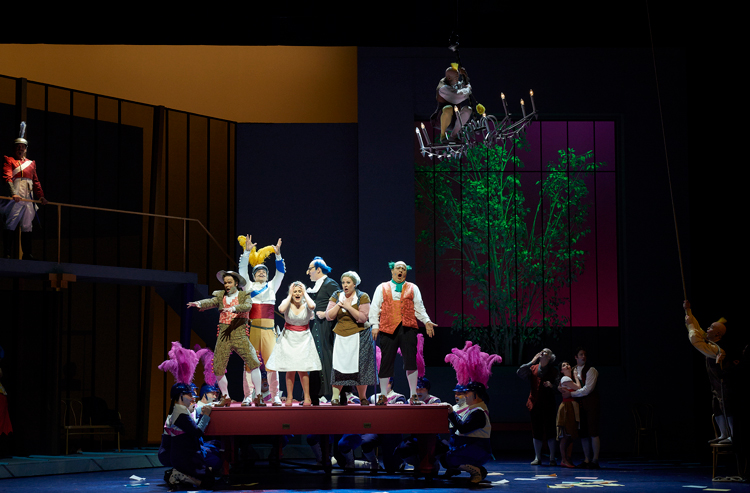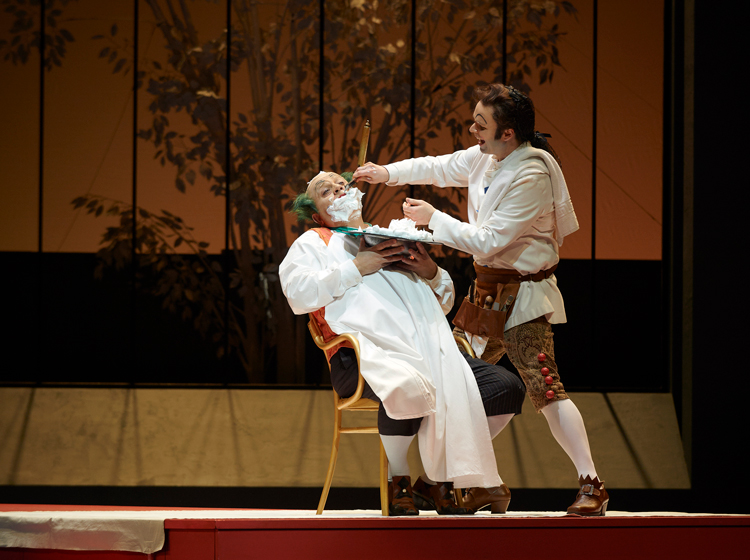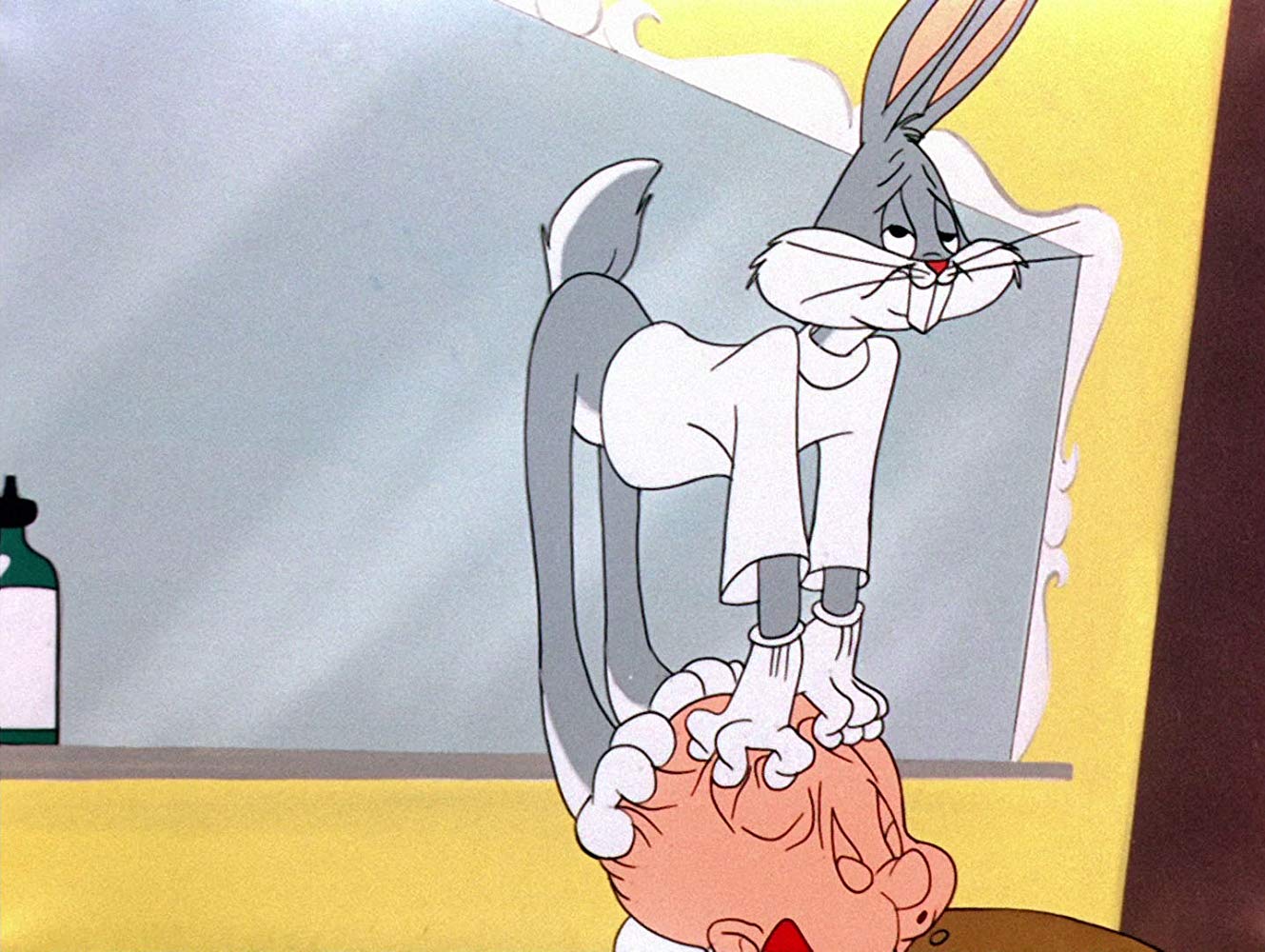A Close Shave
The Barber of Seville is based on a stage play by the French playwright Pierre Beaumarchais (whose Figaro trilogy is a satirical take-down of aristocratic privilege and also includes
The Marriage of Figaro – made most famous by Mozart – and
The Guilty Mother). Rossini’s was not the first
Barber opera; in fact an earlier version by a composer named Giovanni Paisiello was considered such a cornerstone of the
opera buffa repertoire that Rossini decided to write to the elder artist, assuring him that this new version was not intended as an affront to the original.
On opening night a clique of ardent Paisiello fans bought up entire sections of the theatre, intending to boo the opera vociferously and cause a debacle, regardless of what happened on stage. But the performance itself was marred by its own problems: a guitar string broke in the opening scene; a singer tripped over an errant trapdoor and had to deliver his aria while trying to stop a bleeding nose; a cat dashed onto the stage and got tangled up in the soprano’s skirt. Though opening night was a disaster, the second performance was a great success and Rossini’s
Barber has been popular ever since.

A Timeless Barber
Els Comediants – a Spanish theatre collective that has been creating multi-disciplinary performances for over 40 years – combines carnival and circus traditions along with puppetry, dance, acrobatics, pantomime, and
commedia dell’arte practices.
The Barber of Seville owes much to Italian street theatre tradition of improvised comedy, which features recognizable stock characters – the young lovers, the wily servant, the boastful soldier, the old man scheming to marry a young woman. The production team pays homage to these theatrical roots with costumes and makeup that reference these traditional tropes. According to director Joan Font, upon the COC’s first presentation of this production in 2015, “the old Doctor Bartolo could well be a shadow of Pantalone and Figaro a contemporary Arlecchino (Harlequin). The other characters may share numerous similarities to characters in this street theatre; they are prototypes of humanity played in a symbolic manner and able to create absurd, delirious, surreal, comical and ironic situations and actions.”
The designs are partly inspired by Picasso’s Cubist aesthetic and the visual language of constructive sculpture, or art that is made by putting things together from different sources. Colourful guitars in Act I are an example, referencing similar constructions by Picasso. Many elements of the set design also have a multifunctional, open-ended quality, as objects take on different forms. The giant pink piano, for example, becomes a writing desk, a banquet table, and a boudoir over the course of the opera. Doors and windows at crooked angles, exaggerated hairdos, and outsized props all contribute to a cartoon-like disruption of scale and proportion. The semi-transparent fabric walls allow for shadow play and effects that mimic cinematic cutaways and montage, notably during the famous “Largo al factotum” aria, in which Figaro details his many tasks and responsibilities, while we simultaneously watch silhouetted figures performing those errands.
“The idea behind our Barber is timeless; it is not located in a specific space. The action of the opera runs in Seville but it could well happen in the 19th century or in today's Toronto.”
~ Director Joan Font


 A clip from Bugs Bunny's The Rabbit of Seville
A clip from Bugs Bunny's The Rabbit of Seville
